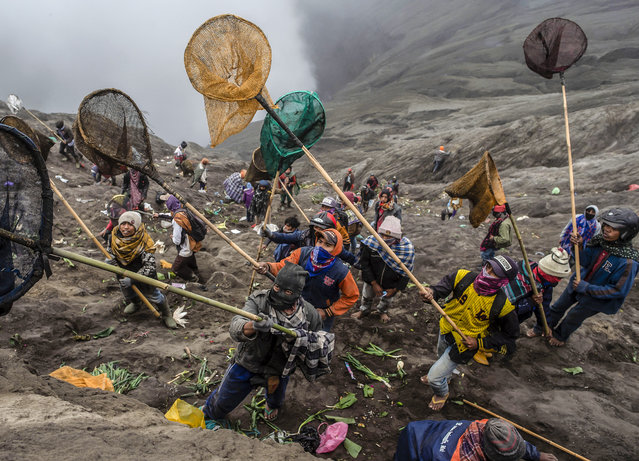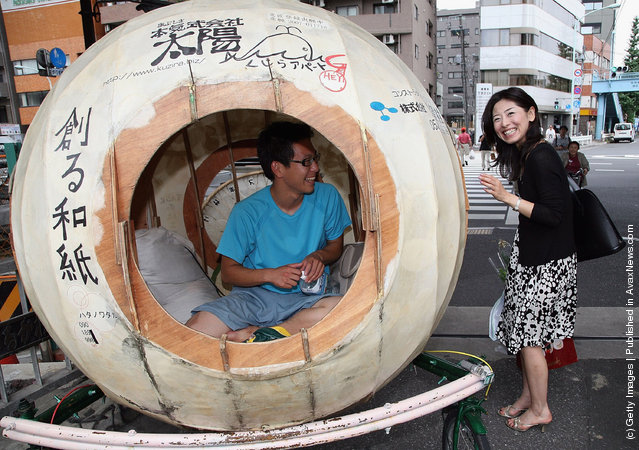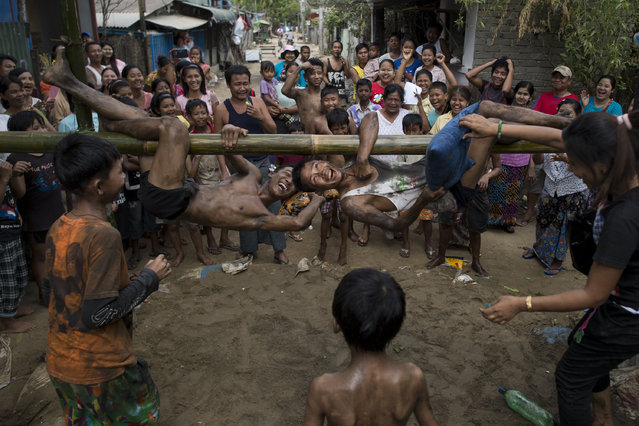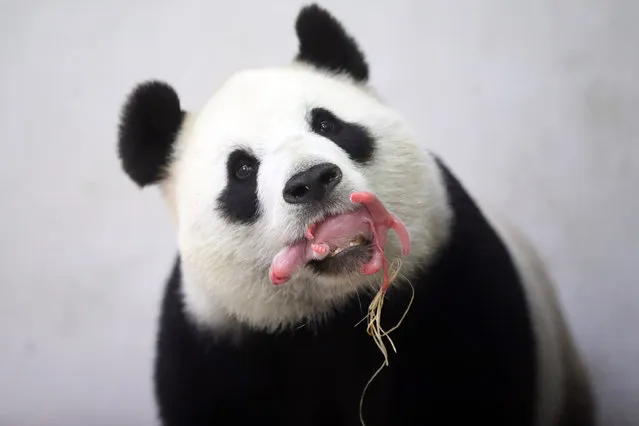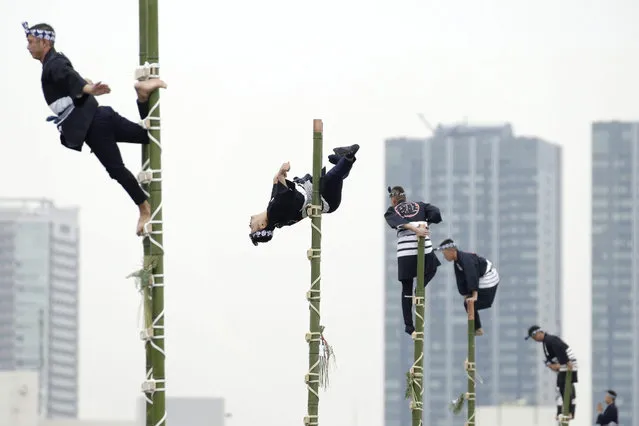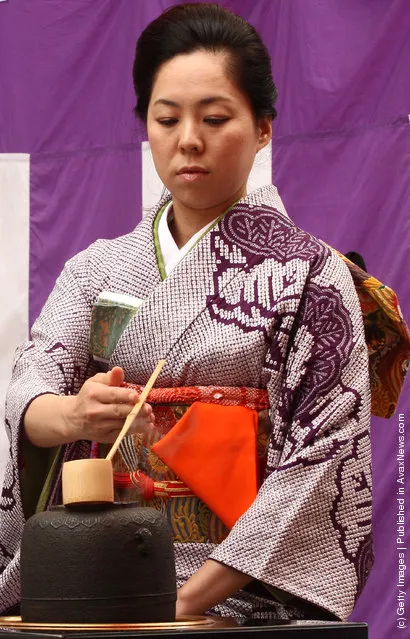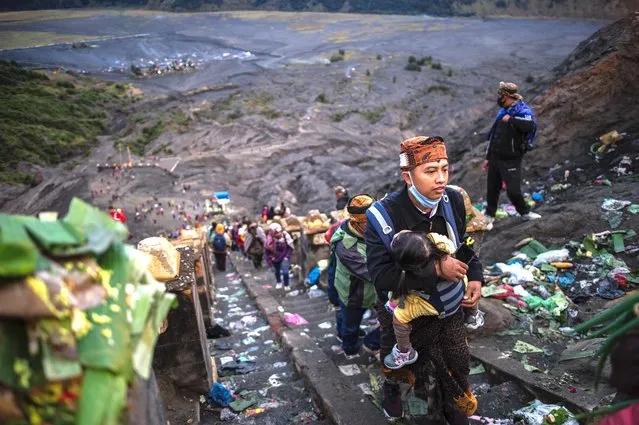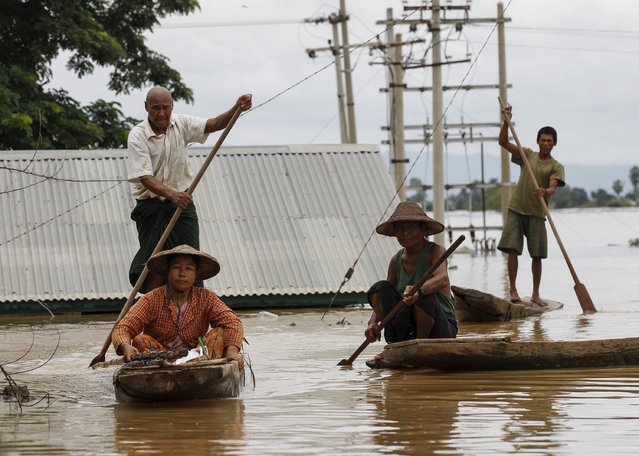
People row their canoes on a flooded street at a village in Kawlin township, Sagaing division, Myanmar, July 21, 2015. Heavy rains caused flooding over 20,000 acres of rice field and in about a hundred villages, killing at least eight people, according to local media. (Photo by Soe Zeya Tun/Reuters)
22 Jul 2015 12:15:00,post received
0 comments

